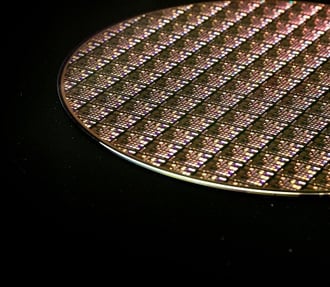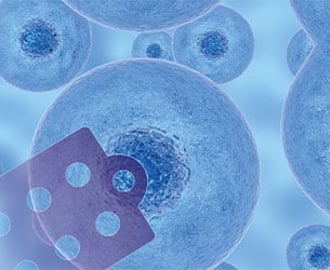Discover how Atomic Force Microscopy (AFM) is revolutionizing industries by providing unparalleled insights into ...

22.10.2024
The ultimate tool for nanoscale research from biological molecules to advanced new materials.
The versatile mid-range research AFM that grows with your demands in modes and accessories.
A compact affordable research AFM that is astoundingly easy to use, with more than 30 modes and options.
Measure roughness and other material properties of heavy and large samples up to 300 mm and 45 kg.
Bringing the power of DriveAFM to a wafer metrology system purpose-built for the requirements of the semiconductor industry.
For unique requirements, we will design a bespoke AFM solution, leveraging our decades of engineering expertise.
Slide an AFM onto your upright optical microscope turret for a leap in resolution.
One of the smallest ever AFMs, created for integration into custom stages or existing setups.
A flexibly mountable research-grade scan head for integration into custom stages or existing set ups.
What is atomic force microscopy (AFM)? How does AFM work? What AFM modes do I really need? How do I get started with AFM?
Learn how AFM works with cantilever/tip assembly interacting with the sample. Explore CleanDrive technology, calibration methods, and feedback principles for precise nanoscale imaging.
An overview of common AFM modes. To learn about each mode in more detail and see application, view the full article.
We regularly publish detailed reviews providing practical guidance and theoretical background on various AFM applications.
Read detailed technical descriptions about selected AFM techniques and learn how to perform specific measurements on Nanosurf instruments.
A library of links to research papers in which Nanosurf instruments were used.
Learn AFM from our library of recorded webinars, covering different measurement techniques, modes, and areas of application.
Short video clips explaining how to perform different operations on Nanosurf instruments.
Watch a product demonstration to learn about the capabilities of our AFMs.
Short videos of our AFMs.
Browse news articles, press releases and a variety of other articles all around Nanosurf.
Browse Héctor Corte-Léon's weekly experiments, for inspiration, entertainment, and to discover everyday applications of AFM.
Is there a reason why some materials cannot be measured by AFM?
Atomic Force Microscopy (AFM) is a powerful technique for investigating surface properties and obtaining high-resolution images at the nanoscale. However, not all samples are suitable for AFM measurements. In this Nanosurf Insights post, we will explore one such example: rough samples. We will discuss the limitations of AFM systems regarding z-scanning range and the importance of sample attachment for successful imaging.
The Challenge of Rough Samples
AFM systems have a limited scanning range in the z direction, typically ≤20 µm. This means that the height variations within the area of interest should not exceed the z scanner range. When dealing with very rough samples that exhibit significant height variations, imaging the sample without causing damage becomes challenging. The AFM tip might come into uncontrolled contact or lose contact with the surface, causing artifacts in the acquired data (clipping). In case, the sample features are too high and the tip comes into uncontrolled contact with the sample damage to the tip or the sample are possible.
To overcome this limitation, certain solutions can be employed. Nanosurf recommends a z-actuator sample holder that can move up to 150 µm. This extended range allows for imaging rougher samples. However, it is important to note that the height of the AFM tip itself is limited. Therefore, careful consideration must be given to the sample's topography to ensure accurate and artifact-free measurements.

Reliable Imaging Requires Secure Attachment
Another critical aspect when considering samples for AFM measurements is their attachment to a surface. Samples must be securely attached and should not move during imaging. Loose attachment or samples floating in liquid are not suitable for AFM investigations.
The scanning process in AFM involves raster scanning a probe across the sample surface. Any movement or instability in the sample can result in distorted images or incomplete data acquisition. Therefore, it is necessary to prepare every sample in a way that ensures stability during imaging.
For solid samples, proper fixation techniques should be employed to securely hold them in place. This can include mounting the sample on a suitable substrate using adhesives or clamps. It is crucial to ensure that the chosen method of attachment does not interfere with the measurement or introduce artifacts that may impact the accuracy of the results.
In the case of samples that must be investigated in a liquid environment, such as biological specimens, it becomes even more challenging to ensure stability during imaging. Specialized sample preparation techniques, such as immobilization on functionalized substrates or using supporting matrices, may be required to overcome this challenge. These techniques provide a stable platform for imaging while preserving the integrity of the sample.
While AFM is a versatile and powerful tool for surface analysis and imaging, it is important to consider the suitability of samples for measurements. Rough samples that exceed the z-scanning range of AFM systems pose challenges in obtaining accurate and artifact-free results. Additionally, samples must be securely attached to a surface to ensure stability during imaging.
Understanding these limitations and considerations can help researchers and scientists choose appropriate samples and preparation protocols for AFM measurements. By selecting suitable samples, optimizing scanning parameters, and employing proper sample preparation techniques, the full potential of AFM can be harnessed to gain valuable insights into the nanoscale properties of various materials.
Conclusion
Remember, successful AFM measurements start with careful sample selection and preparation, paving the way for accurate and reliable data acquisition.
What is recommended for fixing nanoparticles to the substrate for contact mode? Or for sample deposition - can drop casting or spin coating be used? Find the answers to these and other questions in our frequently asked questions document here:

22.10.2024
Discover how Atomic Force Microscopy (AFM) is revolutionizing industries by providing unparalleled insights into ...

09.09.2024
Explore the strengths and limitations of Atomic Force Microscopy (AFM), Scanning Electron Microscopy (SEM), and ...

29.11.2023
Discover how Nanosurf's collaboration with a team of scientists has revolutionized spring constant calibration for ...

11.07.2024
FridayAFM: learn how to perform datamining on large sets of AFM data.

02.07.2024
FridayAFM: learn how to automatize data analysis in MountainsSPIP

26.06.2024
FridayAFM: learn how AFM makes possible modern ball point pens.
Interested in learning more? If you have any questions, please reach out to us, and speak to an AFM expert.
